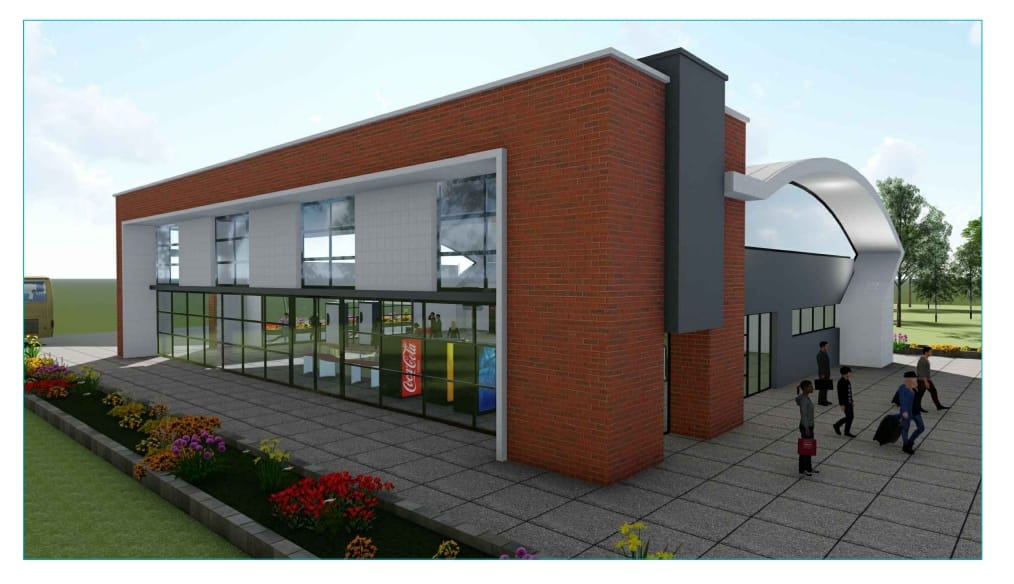New arrival hall to be built at domestic terminal

KATHMANDU: JAN. 31 – The domestic arrival hall at Kathmandu’s Tribhuvan International Airport is often pandemonium because of severe congestion, and endless complaints from travellers have finally prompted authorities to decide to build a new facility.
The Civil Aviation Authority of Nepal on Sunday issued an invitation for bids to build a new arrival lounge, and potential bidders have been given until March 2 to submit their documents.
According to Hari Adhikari, chief of the project, a separate facility will be erected at the existing domestic taxi parking lot. “The existing terminal will be used as a departure lounge only.”
Adhikari said the cost of the project would be ascertained after the bidders submit their financial proposals. Insiders say that the project’s estimated cost could be around Rs80 million. The prefab building will be prepared within a year.
As per the plan, the arrival hall will be 40 metres long and 24 metres wide and have two 35-metre-long baggage conveyor belts. The facility will have waiting and toilet facilities, and be able to accommodate 200 people at a time.

“The planned facility is a temporary arrangement for five to seven years,” said Adhikari.
“Rising domestic passenger movement has been causing strain on the existing domestic facility. The existing terminal itself was developed as a temporary measure to cater to the growing number of domestic travellers.”
Industry insiders say domestic movement could witness a sharp rise after the two under-construction international airports in Pokhara and Bhairahawa come into operation later this year.
“We expect a certain percentage increase in domestic passenger movement once these two airports come online,” said Adhikari. Domestic carriers have started to expand their fleets following a boom in traveller numbers.

Nepal’s largest helicopter operator, Shree Airlines, which diversified into fixed-wing services in April 2017, added two aircraft to its fleet within a span of a month.
Its latest addition is an 80-seater Bombardier Dash 8-Q400 that landed at Tribhuvan International Airport on Friday. With this, the company now has a total of eight aircraft—four CRJ series aircraft and four Dash 8-Q400.
“We have planned to add two more Dash 8-Q400 by this year,” Anil Manandhar, corporate manager of Shree Airlines, told the Post. Manandhar welcomed the civil aviation body’s decision to construct a new arrival hall.
“The domestic terminal building has become saturated. As there is only one conveyor belt at the arrival hall, it has been causing problems for passengers. We have been receiving endless complaints from travellers.” Nepal’s largest private carrier Buddha Air is also on an expansion spree.
Birendra Basnet, managing director of Buddha Air, told the Post in a recent interview that they were adding four 72-seater ATR-72 aircraft, three of which would arrive by April.
Buddha Air plans to become a top ATR operator in South Asia within the next few years, and has been consolidating its plan accordingly. It currently has 15 aircraft in its fleet.
Industry insiders say that Yeti Airlines is also planning to add two ATR-72 aircraft soon. Nepalis are flying like never before and setting all-time high records in domestic passenger numbers, airport figures showed.
In 2021, a horde of 3.54 million domestic fliers braved Covid restrictions and took to the skies, the highest number of air travellers recorded in the history of Nepali aviation.
According to Tribhuvan International Airport statistics, domestic air passenger numbers were up a sharp 11.08 percent from pre-Covid 2019 levels, as airlines dangled cheap tickets to attract travellers. There are 20 airline companies in Nepal, including 10 fixed-wing operators.
The statistics show that plane travel took off in 2021 after a disastrous 2020 due to the coronavirus outbreak. Domestic passenger traffic at Kathmandu’s Tribhuvan International Airport fell to its lowest level in 2020 since 2009.
 In 2020, domestic airlines carried 1.45 million passengers, a 54.28 percent plunge from the 2019 figure. Aircraft movements also dropped to a multi-year low of 38,610 takeoffs and landings, representing a steep 57.94 percent fall from the year before.
In 2020, domestic airlines carried 1.45 million passengers, a 54.28 percent plunge from the 2019 figure. Aircraft movements also dropped to a multi-year low of 38,610 takeoffs and landings, representing a steep 57.94 percent fall from the year before.
The existing domestic terminal came into operation in May 2016. Nepal’s civil aviation body has been implementing the first phase of the Tribhuvan International Airport Master Plan 2026 with a loan and grant assistance from the Asian Development Bank.
Airport officials said that the new domestic terminal had been designed to serve until 2028. As per the master plan, the present international terminal will be used to handle domestic flights.
“We expect domestic passenger numbers to reach the 4 million mark this or the next year,” said Adhikari. “There is a need for an upgraded infrastructure accordingly.”
-Kathmandu Post










